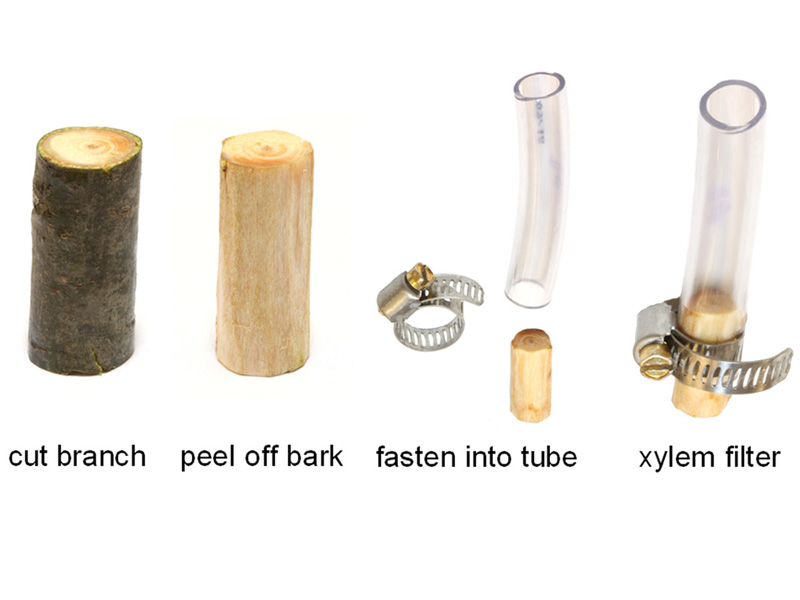March 30, 2014 – The engineers and scientists at Massachusetts Institute of Technology (MIT) always come up with some interesting ideas. Why not mimic the way plants transport water from root to leaf eliminating contaminants like bacteria along the way?
Xylem is the porous tissue that conducts fluids throughout plants. You see it when you peel back bark on a healthy tree, that somewhat spongy wood that lies just inside the bark. It is called sapwood because when deciduous trees emerge from hibernation each winter, the sap travels from the roots to the budding leaves by this route. And although conifers don’t lose their needles during the winter, much of the sap within them is channeled to the roots for storage.
In an experiment the scientists at MIT chose xylem from white pine trees to create an effective water filter.They took sapwood from trees and stuffed it into a tube. They sealed all gaps with epoxy. Then they added water and pressure equivalent to that which trees experience from gravity. The fluid filtered through the 1 centimeter square filter at a flow rate of approximately 4 liters per day, enough drinking water to sustain one person. The water that came through filtered out particles and bacteria including E-coli.
When they examined the filters they found out that a 3 millimeter length was all that was needed to effectively remove suspended particles of a size 100 nanometers or greater. So viruses can get through but when you consider the worst waterborne infectious diseases are largely of bacterial origin, this easy to manufacture filter that is cheap to produce and biodegradable, could clean up 99% of the contaminants in water that make us sick. This includes salmonella, cholera, giardia and E-coli.














Garry Bowen
Global Community Launch Team: The Natural Step Framework (aka FSSD [Framework for Strategic Sustainable Development] )
As a practitioner of silviculture (how forests grow) in my eclectic ecologic background, this would appear to be an offshoot of phyto-remediation (plant-based) to go along with bio-remediation (biologic) in creating some very much needed recognition that these functions have been there all along. . .
Forests are also known as ‘water factories’ in the active filtration of of water coming through the hydrologic-cycle as rain, snow, or even as evapotranspiration (rain & snow come down; in evapotranspiration, it goes up as a mist, creating clouds).
What is known as the cellulosic bond is almost as strong as the hydrogen bond (why when water is broken down as hydrogen and oxygen, the end by-product is always water) – this is why wood has been used as a structural element in building for as long as can be remembered. . .
The key here is in knowing – not to create an entire new industry from finding this out (i.e., the source of new grant funding) – as academics need to develop a reverence for what Nature already accomplishes, in supporting reforestation to absorb CO2 – as new proof.
Nature is quite a wonderful thing, and keeps teaching us new technologies all of the time. Being able to filter contaminants from the water, using a tree branch as the water filter, is quite amazing. Hopefully, they can mimick this in some way to be able to produce cheap, effective water filters, or at least do more research and find other types of trees that can do the same thing, for areas all over the world.